
Pin on Blooming Flowers
Medinilla magnifica plants love bright indirect lighting and hate direct sunlight, especially at the hottest points of the day/year. In order for the plant to thrive, you should keep it in an area where the temperature is consistently between 70° and 75° F.; however, the plant will do OK in temperatures down to 64°.
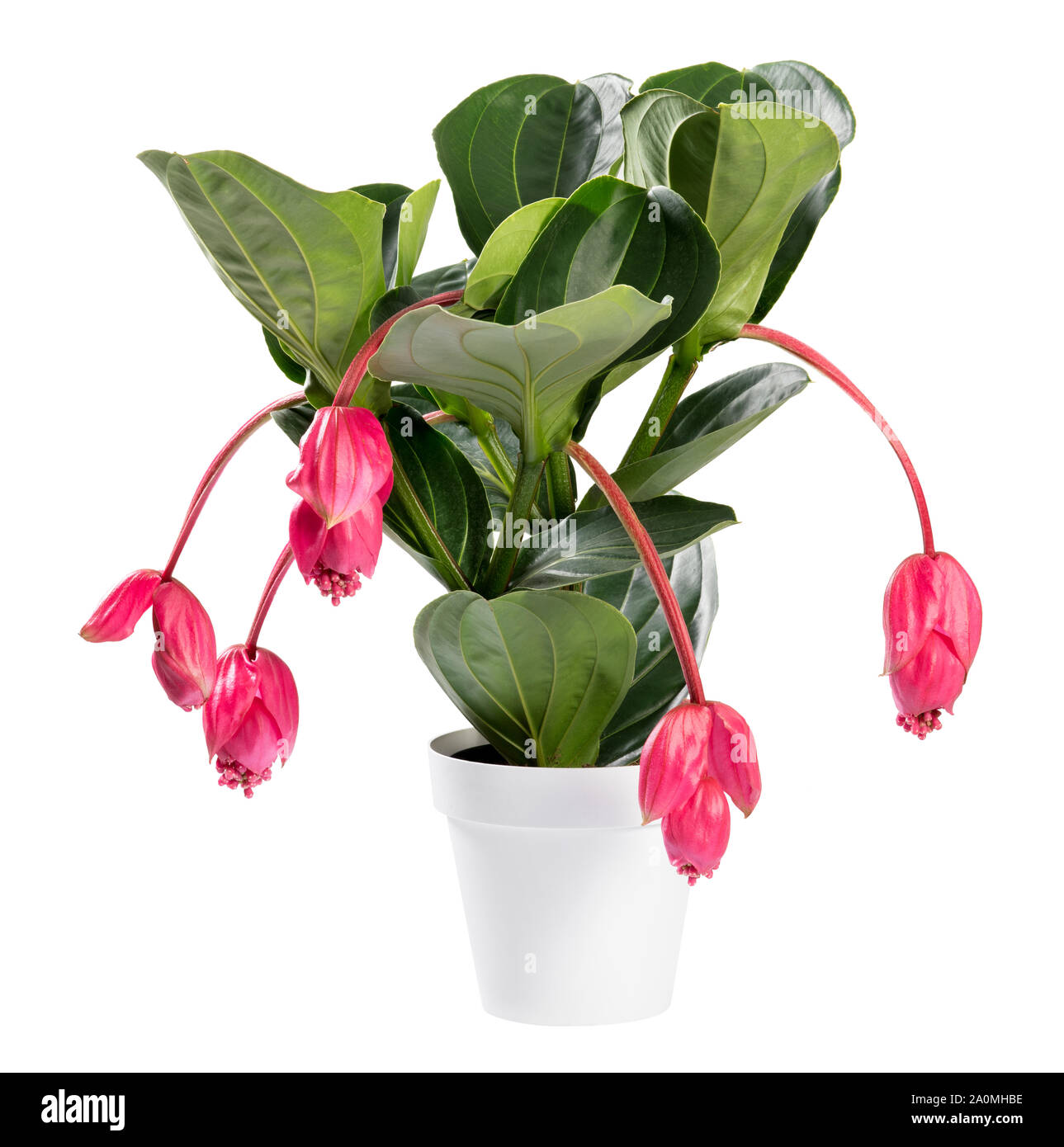
Showy medinilla medinilla magnifica Cut Out Stock Images & Pictures Alamy
Cultivation. Grow under glass in loam-based potting compost (JI No 2) in bright filtered light, or full light with shade from hot sun. Provide high humidity by placing on an upturned saucer in a tray with moist gravel. Water moderately in growth and apply a balanced liquid fertiliser monthly. Water sparingly in winter.
Medinilla wspaniała Medinilla Magnifica kwiat 7499031643 oficjalne
According to my actual experience, Medinilla Magnifica is not your typical houseplant. Its distinctive features set it apart, making it both a challenge and a joy to cultivate. Picture this: a small evergreen shrub, reaching up to 3 meters in height, adorned with leathery, dark green leaves growing up to 30 cm long. The pièce de résistance? Panicles of stunning flowers, up to 50 cm long.
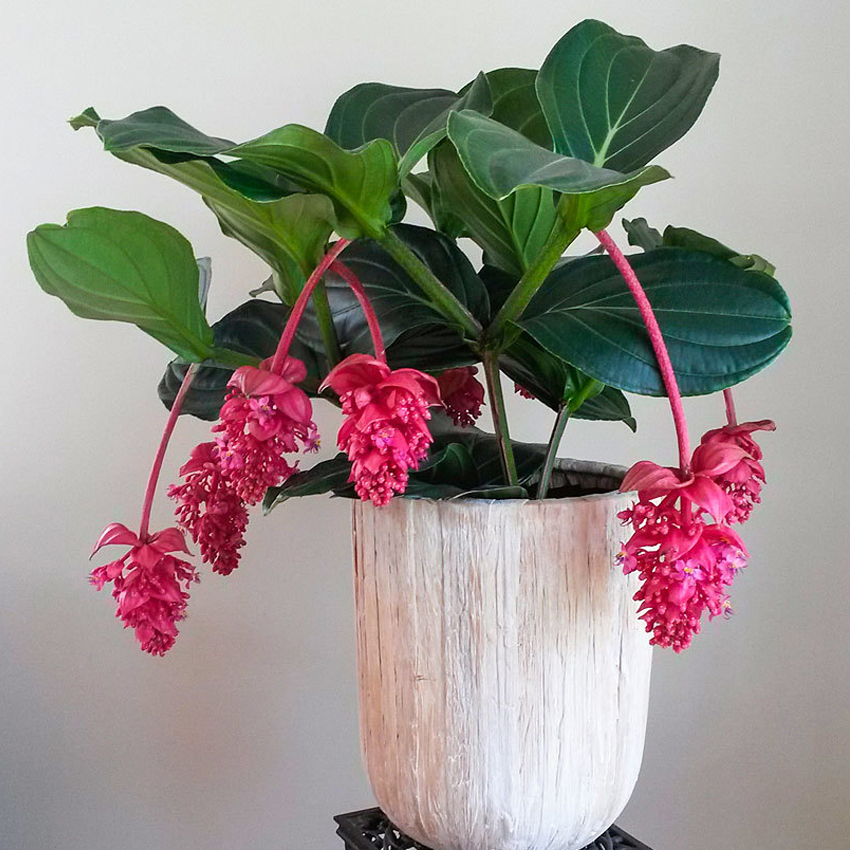
US 1.45 Medinilla Magnifica Seeds 30PCS Showy Medinilla Perennial
The Medinilla magnifica plant is truly breathtaking when in bloom. It grows stunning pink flowers hanging on long drooping stems that can last for months!. This eye-catching evergreen plant has large dark green leathery leaves with prominent veins.. The magnificent Medinilla magnifica is also sometimes called rose grape plant, pink lantern plant, Malaysian orchid, jungle chandelier, or showy.

Growing the Rare Red Medinilla (Medinilla miniata) YouTube
Take a cutting with at least two leaves, but remove two-thirds of each leaf to reduce their burden on the stem. Use a powdered rooting hormone as a stem dip to encourage rooting. This plant can also be propagated from seeds. Following flowering, the fruit clusters that the Medinilla produces are full of seeds.

medinilla magnifica plant
Najpiękniejsza roślina kwitnąca. W naszych mieszkaniach można spotkać wiele kwitnących roślin doniczkowych, ale chyba żadna z nich nie dorównuje urodą absolutnie przepięknej, pochodzącej z Filipin medinilli wspaniałej (Medinilla magnifica). Ta wyjątkowa, egzotyczna piękność, wymaga wprawdzie bardzo szczególnych warunków.

Pin on ) Plants to find, love,... appreciated♥
To ensure proper growth, place the pot in a bright, indirect light location and keep the soil moist. After a few weeks, the cutting should start to root. Once the cutting has rooted, remove the plastic bag and continue to care for the plant as you would a mature Medinilla Magnifica.

Medinilla Magnifica Flower Growing in the Pot Stock Image Image of
The Medinilla magnifica's flower is made up of many small flowers cupped in bracts growing up to 50 cm long. A closer look will reveal delicate purple anthers sticking out of the trumpet-shaped flowers. Once the flower is spent, remove it to help the plant continue growing. Once new leaves start to open up, you can place the plant in a cooler.

Medinilla magnifica, hoe te houden en Bloemplanten
Medinilla. Genus description. Medinilla are evergreen shrubs or woody climbers, with simple, leathery leaves and often pendulous sprays of whtie or pink flowers, sometimes subtended by showy pink bracts. Name status. Accepted. Advertise here. Find help & information on Medinilla magnifica 'Royal Twist'PBR from the RHS.
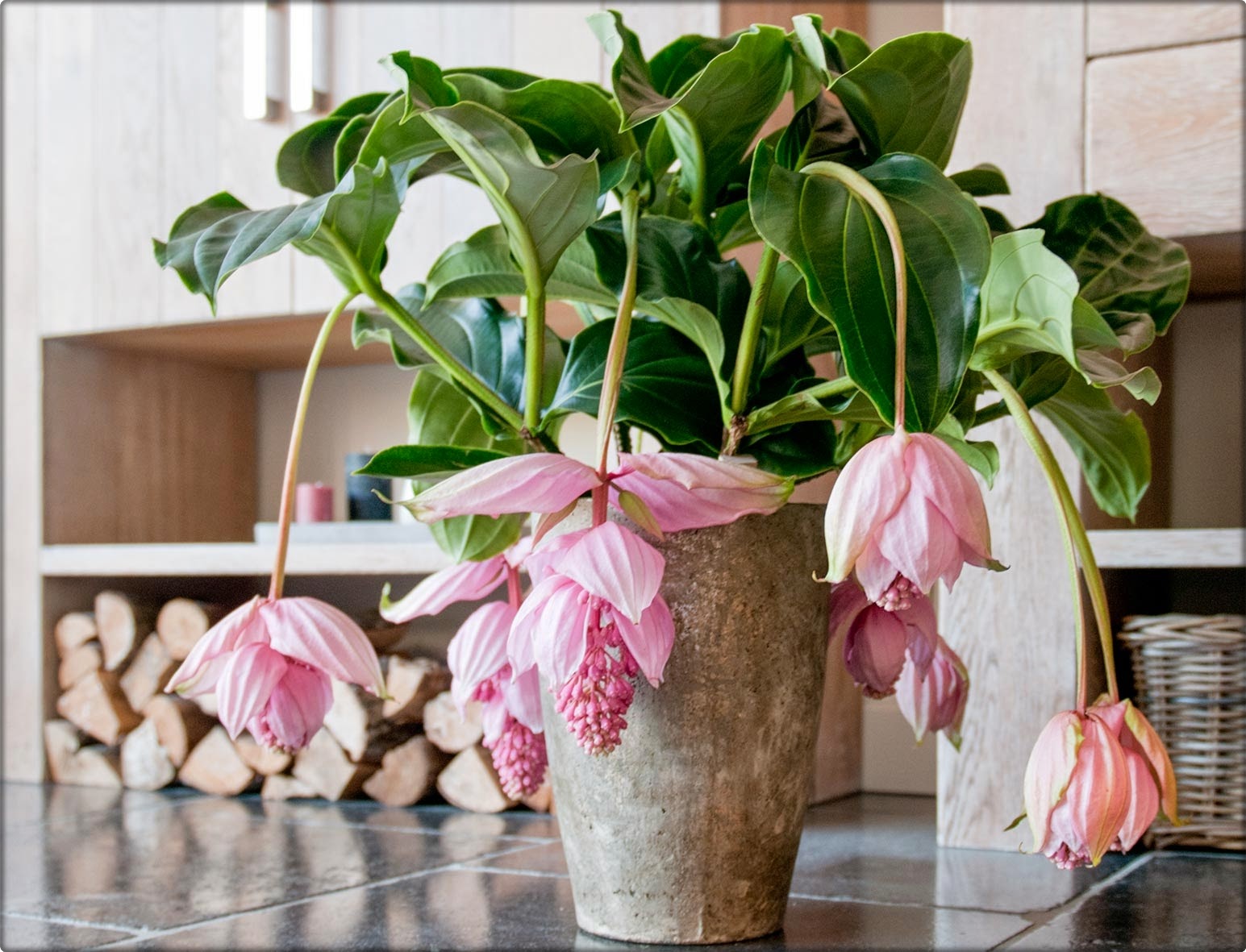
Medinila (Medinilla magnifica) Moj Vrt Cvijeća
MONA THE MEDINILLA Also known as the rose grape, showy medinilla, pink lantern and chandelier tree. The Medinilla Magnifica lambada is native to the Philippines. LIGHTING Mona likes a bright room. She will not tolerate direct sunlight as this will burn her lovely pink flowers. Place her near a window with blinds or shutters that offer some bright, filtered light. Lighting-wise Mona pairs.
MEDINILLA WSPANIAŁA MAGNIFICA XL 65 cm 7941536320 oficjalne
Medinilla wspaniała (Medinilla magnifica). Kwiat Medinilla wspaniała - sklep. Łatwo zrozumieć osoby, które widząc medinillę w kwiaciarni, ulegają jej urokowi. Kto zdecyduje się na kupno, powinien wybrać okaz z pąkami. Pojawiają się one w kwietniu, są różowe i bardzo dekoracyjne. Z nich powoli rozwijają się kwiaty, o.
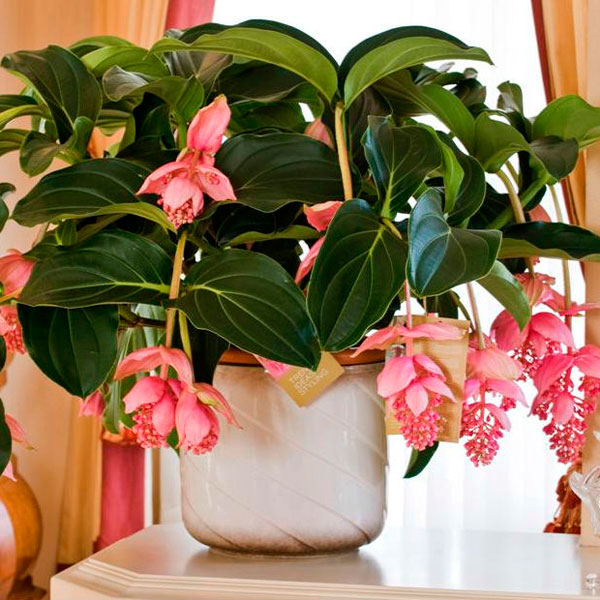
Medillina magnifica PICCOLINI Jarditec
Temperature. Provide a temperature of between 18-25ºC (64-77ºF) throughout the year, lowering the temperature slightly, but not below 15ºC (59ºF), during the winter period (November to January) or if in flower then after flowering has finished. Feed. Apply a standard liquid fertiliser every two weeks once flower buds begin to open.
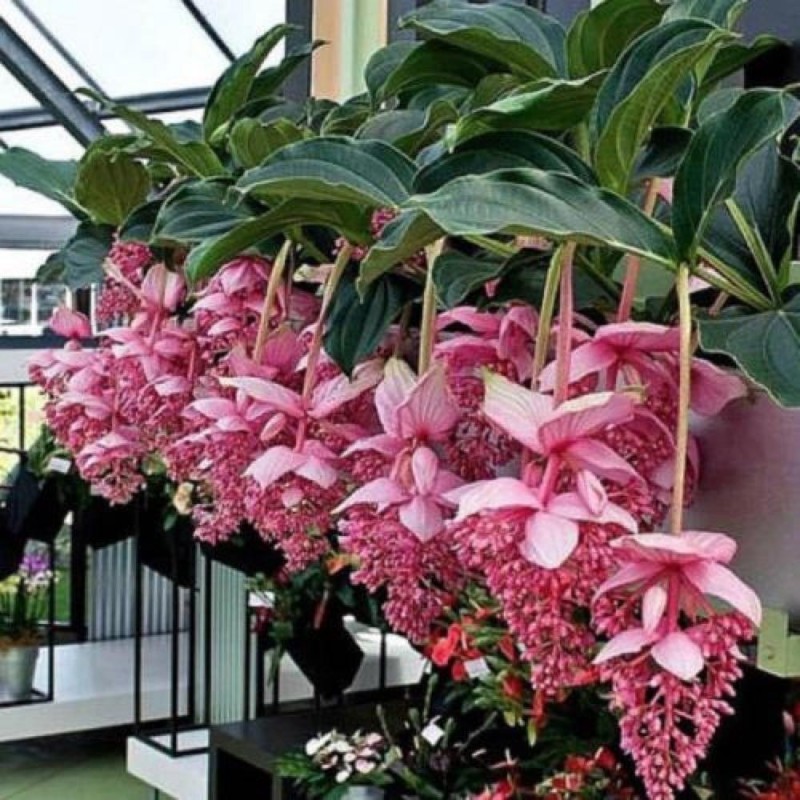
Graines de fleur Medinilla Raisin Rose (Medinilla magnifica)
Medinilla plants are most suitable for a warm and humid environment. Observe a temperature of 64-77ºF (18-25ºC) throughout the year. It's important to note the temperature threshold for the winter period which must not go lower than 15ºC (59ºF). You can easily maintain high humidity with a cool-mist room humidifier.
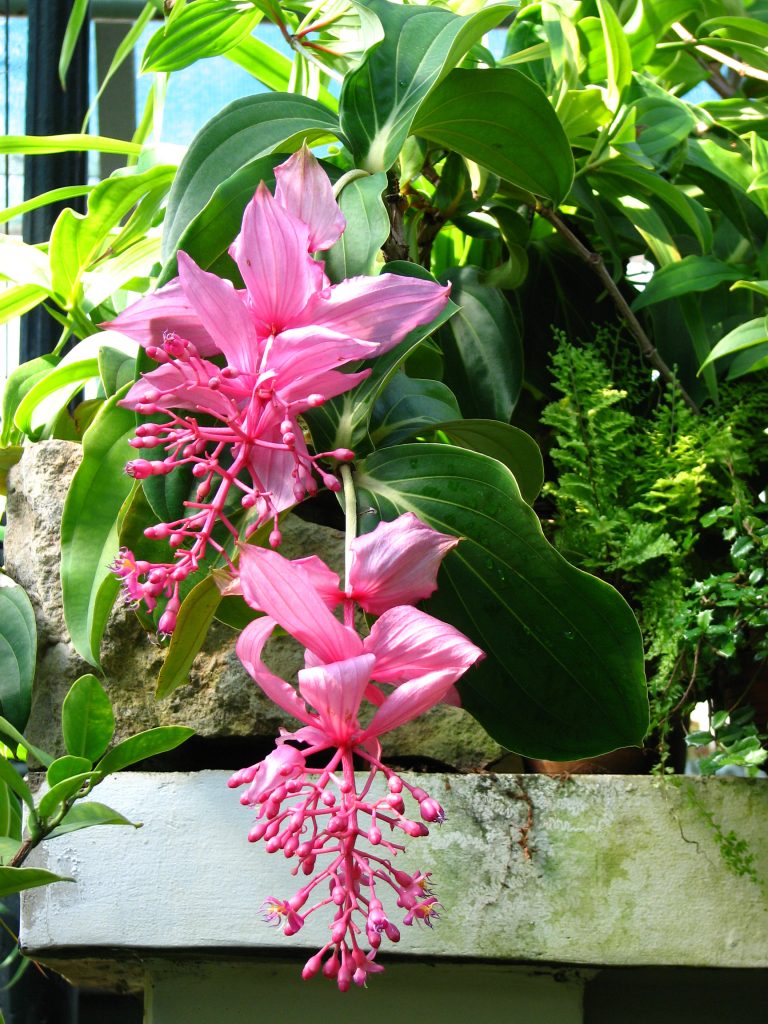
Medinilla magnifica Características y cultivo Plantas Interior Flor
Where the medinilla magnifica comes from. The medinilla magnifica is an evergreen shrub native to Southeast Asia, specifically to the Philippines, where it grows on trees in tropical forests. (In fact, it's also known as the Philippine orchid.) It is an epiphyte, which means that it climbs on trees and shrubs, but won't take energy from them as parasitic species do.

Medinilla Magnifica kwiat zdjęcie stock. Obraz złożonej z dekoracje
Showy medinilla thrives in high humidity and warm temperatures of at least 68°F (20°C) in the growing season. Cooler temperatures in the winter and fall are healthy and will simulate the natural seasons these plants are used to. Temperatures below about 59°F (15°C) can be harmful to these tropical evergreens, however.

Medinilla magnifica (orchidea filippina o uva rosa) Coltivazione e
Medinilla wspaniała (Medinilla magnifica) to okazały krzew z rodziny zaczerniowatych (Melastomataceae).Pochodzi z południowo-wschodniej Azji (Filipiny), gdzie jest epifitem, porastającym zagłębienia w koronach drzew, ale jest też powszechnie uprawiany w wielu innych krajach świata jako atrakcyjna roślina doniczkowa.